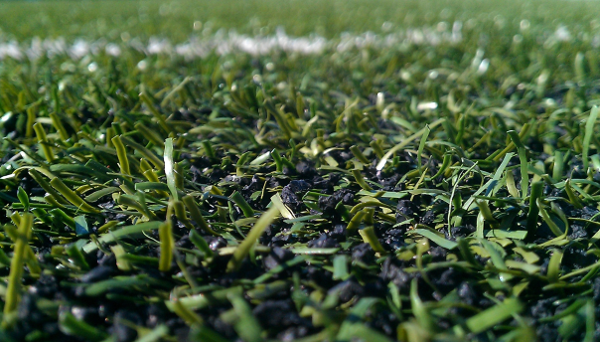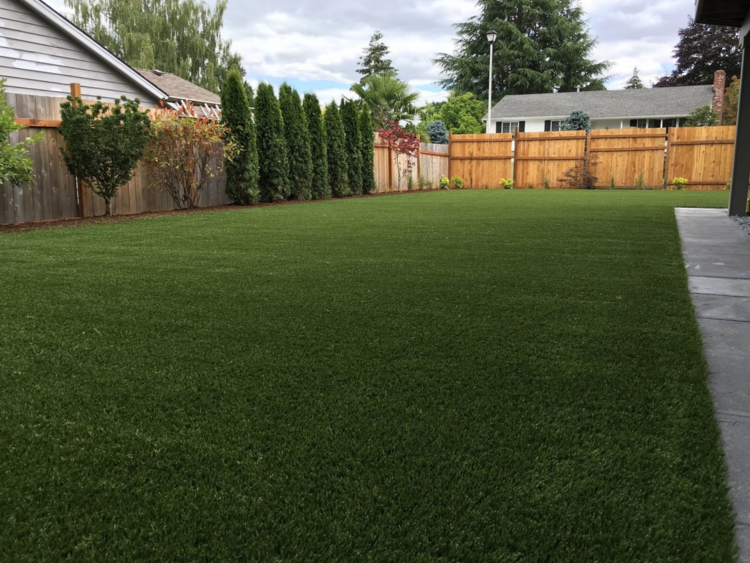Well-Known Artificial Turf Companies Phoenix for a Attractive and Green Lawn
Well-Known Artificial Turf Companies Phoenix for a Attractive and Green Lawn
Blog Article
Delve Into the Environmental Conveniences of Opting for Synthetic Grass Solutions
The adoption of synthetic grass solutions provides an engaging possibility to deal with pressing ecological difficulties. By substantially lowering water use and reducing the application of damaging chemicals, these alternatives not just advertise sustainable landscape design however also safeguard local ecosystems. The lower carbon footprint associated with lowered maintenance activities adds to an extra sustainable strategy to land management. Nonetheless, the effects of these benefits expand beyond simple preservation initiatives, increasing inquiries about their lasting effect on habitat conservation and total ecological balance. Checking out these measurements reveals an intricate interplay worth thinking about.
Water Conservation Advantages
One of the most considerable advantages of artificial lawn is its capability to conserve water. In comparison, artificial lawn does not require watering, considerably reducing the overall need for water resources.
By removing the requirement for normal watering, man-made lawn adds to lasting landscape techniques and assists reduce the ecological impact of excessive water consumption. The preservation of water prolongs to the decrease of runoff, which can lead to soil disintegration and waterway air pollution.
Furthermore, the setup of fabricated turf allows municipalities and property owners to allocate water sources a lot more successfully, concentrating on vital usages such as drinking water and agriculture. The change in the direction of synthetic grass not just advertises liable water use but likewise straightens with broader environmental goals aimed at maintaining natural resources.
As neighborhoods significantly focus on sustainability, the water preservation advantages of fabricated lawn present a compelling situation for its fostering in business and household landscape design tasks.
Lowered Chemical Use
The transition to synthetic grass considerably reduces the reliance on chemical treatments typically used in natural grass maintenance. Conventional turf management usually includes the application of herbicides, pesticides, and fertilizers to promote development and control bugs. These chemicals can position risks to human health and wellness, local wild animals, and the atmosphere, adding to soil and water contamination.
In comparison, synthetic lawn gets rid of the demand for these harmful compounds. By reducing the launch of synthetic compounds into the ecosystem, man-made lawn promotes much healthier soil and water systems.
In addition, the absence of chemical drainage related to synthetic grass installments helps secure neighborhood rivers from contamination, sustaining marine life and preserving biodiversity. Turf installation phoenix az. As neighborhoods progressively focus on lasting techniques, choosing man-made turf provides a feasible solution that straightens with environmental preservation goals. With this shift, home owners can enjoy lavish environment-friendly areas without endangering eco-friendly wellness, leading the method for a much more lasting future
Reduced Carbon Impact

Additionally, the installment of synthetic grass can lead to considerable water preservation. Natural yards need considerable quantities of water for watering, which not just includes to the carbon impact connected with water removal and treatment however likewise stress neighborhood water sources. In contrast, artificial grass needs marginal upkeep, requiring no watering, therefore substantially reducing water usage and its associated power costs.
In addition, the durability of artificial turf adds to its reduced carbon impact. With a life expectancy of up to 15 years or even more, the demand for regular substitutes is diminished, causing less waste and reduced energy intake in manufacturing and disposing of typical grass options. On the whole, synthetic grass offers a lasting choice for ecologically conscious landscaping.
Environment Preservation
Environment conservation is a vital factor to consider in the argument over landscaping choices, particularly when contrasting man-made lawn to all-natural turf. Natural grass lawns commonly require considerable upkeep, consisting of making use of pesticides, fertilizers, and herbicides, which can detrimentally influence local ecosystems. These chemicals can seep right into the soil and rivers, hurting indigenous vegetation and animals and disrupting regional habitats.
Artificial lawn removes the demand for unsafe chemicals, thus shielding neighboring wild animals and keeping the honesty of surrounding environments. The setup of man-made grass can lead to the conversion of former turf areas into more biodiverse landscapes, such as pollinator yards or indigenous plant locations, which can support regional wild animals.
Eventually, the transition to man-made grass not only conserves water and minimizes upkeep initiatives yet additionally promotes a more harmonious partnership in between human tasks and the natural environment, advertising environment preservation at the same time.
Long-Term Sustainability
Lasting sustainability is a critical aspect in examining the advantages of synthetic grass over standard turf yards. Among one of the most significant advantages of man-made turf is its resilience; it can last up to 15-20 years with marginal maintenance, whereas all-natural lawn calls for look here regular reseeding and replacement. This long life decreases the demand for continuous sources, such as water, fertilizers, and chemicals, which are necessary for keeping a healthy grass yard.
In addition, fabricated grass adds to a reduction in carbon exhausts linked with yard care tools. Standard lawns typically call for gas-powered mowers, leaners, and blowers, all of which contribute to air contamination. Phoenix turf companies. On the other hand, man-made lawn removes the need for such tools, promoting a cleaner atmosphere
In addition, the production of man-made grass increasingly uses recycled products, enhancing its sustainability account. As manufacturers embrace eco-friendly methods, the ecological footprint of artificial grass remains to lessen.

Final Thought
The adoption of synthetic grass remedies provides substantial environmental benefits, including considerable water conservation, lowered reliance on harmful chemicals, and a reduced carbon footprint. Furthermore, synthetic grass help in preserving all-natural habitats by minimizing land disruption and advertising long-lasting sustainability via the use of durable products. Jointly, these elements highlight the possibility of synthetic grass to contribute favorably to ecological health and offer a feasible option to standard landscaping practices in an increasingly resource-conscious world.
In comparison, synthetic grass does not need watering, dramatically minimizing the general demand for water sources. By minimizing the launch of artificial substances right into the environment, fabricated lawn promotes healthier dirt and water systems.
Additionally, the installment of fabricated lawn can result in significant water preservation. In comparison, artificial turf needs minimal maintenance, requiring no watering, right here thus substantially decreasing water use and its associated energy prices.

Report this page